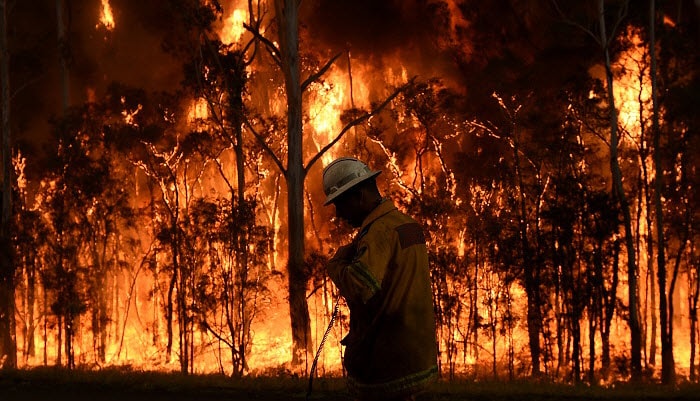Beyond Conformity: Enhancing Home Safety with a Thorough BAL Report
Beyond Conformity: Enhancing Home Safety with a Thorough BAL Report
Blog Article
Expert Advice on Bushfire Administration for Enhanced Fire Protection
In the world of bushfire management, the relevance of professional suggestions can not be overstated. From understanding the subtleties of bushfire behavior to implementing functional steps such as firebreaks and defensible spaces, there exists a riches of understanding that can significantly enhance fire security initiatives.
Comprehending Bushfire Habits
To properly reduce the influence and manage of bushfires, it is imperative to have a detailed understanding of bushfire habits. Bushfires are complex all-natural phenomena influenced by various aspects such as weather condition problems, topography, fuel load, and human tasks. Recognizing just how these components connect is essential in predicting the behavior of a bushfire, enabling better preparation and feedback approaches.
One key facet of bushfire behavior is fire spread. By studying previous fire events and examining fire patterns, professionals can prepare for how a bushfire might progress under certain problems.
In addition, comprehending cinder assault, finding, and fire tries is necessary in realizing the complete degree of bushfire habits. By diving into these intricacies of bushfire habits, authorities can enhance their preparedness and action abilities, eventually lowering the influence of these devastating occasions.
Carrying Out Firebreaks and Defensible Rooms
Recognizing bushfire habits is foundational for successfully carrying out firebreaks and producing defensible areas to improve fire security. Firebreaks are purposefully placed gaps in vegetation or other flammable products that work as obstacles to stop the progress or slow down of a bushfire. These can be natural features like roads or rivers, or synthetic cleanings. Keeping these firebreaks through routine cleaning of particles and vegetation is vital to guarantee their effectiveness during a bushfire event.

Correctly implementing firebreaks and defensible spaces requires meticulous preparation, normal upkeep, and neighborhood cooperation to ensure the highest possible level of fire defense for properties and lives in bushfire-prone locations.
Making Use Of Early Warning Systems
Deploying sophisticated early caution systems is important for timely detection and informing of prospective bushfire threats. By utilizing innovative modern technologies such as satellite tracking, weather sensing units, and thermal imaging, authorities can efficiently find and keep track of fire-prone locations ignition resources at the earliest stages. These systems can supply real-time data ablaze habits, strength, and instructions, permitting punctual decision-making and fast deployment of firefighting sources to the influenced areas.
Very early warning systems likewise play an essential function in notifying residents and areas concerning foreshadowing bushfire dangers. With automated sirens, text informs, call, and social media notices, people can be rapidly informed about discharge orders, safe shelter areas, and emergency procedures. This proactive method not only saves lives but additionally decreases home damage by BAL Report making certain that individuals have sufficient time to evacuate and shield their homes.
Developing Emptying Plans
Reliable evacuation plans are crucial for making sure the safety of citizens in bushfire-prone locations. Establishing well-thought-out evacuation methods is crucial in mitigating the dangers positioned by bushfires and protecting human life. These plans must be comprehensive, thinking about numerous aspects such as the topography of the area, the density of vegetation, and the most likely rate and direction of the fire's spread.
When creating discharge plans, it is very important to establish clear discharge paths and assembly points where residents can collect securely. These courses ought to be regularly kept to ensure accessibility during emergency situations. Additionally, interaction techniques must be in place to sharp homeowners of brewing danger and offer clear directions on discharge procedures.
Cooperation between neighborhood authorities, emergency solutions, and community participants is essential in establishing reliable emptying strategies. Routine drills and exercises must be conducted to familiarize homeowners with the procedures and make certain a swift and organized emptying when a bushfire intimidates the area. By prioritizing the growth of robust discharge plans, areas can improve their resilience to bushfire emergencies and lower the possible influence on lives and properties

Taking Part In Neighborhood Readiness
In the realm of bushfire management, cultivating neighborhood preparedness plays a crucial duty in fortifying the resilience of citizens residing in risky areas. Involving in community readiness involves enlightening residents on bushfire dangers, advertising fire security techniques, and developing emergency situation strategies collectively. By proactively involving the community in preparedness initiatives, people come to be more informed and equipped to take positive steps to protect their lives and residential properties throughout bushfire events.
Area readiness initiatives often consist of carrying out fire drills, developing interaction networks, and arranging training sessions on fire reductions methods. Encouraging partnership among neighbors to develop a natural assistance system can considerably improve the total readiness level of a community. The possibility of reducing damage and making sure safety and security rises substantially. when residents are educated and geared up to respond successfully to bushfires.
Verdict
In verdict, effective bushfire management requires a comprehensive understanding of fire actions, the application of firebreaks and defensible rooms, the usage of very early caution systems, the development of discharge plans, and neighborhood engagement in preparedness initiatives. By including these methods, neighborhoods can enhance their fire defense actions and minimize the effect of bushfires on both property and lives. BAL Report. It is essential for all stakeholders to interact to produce a much safer atmosphere despite this all-natural catastrophe
To efficiently handle and mitigate the influence of bushfires, it is critical to have a thorough understanding of bushfire actions. By researching previous fire occurrences and examining fire patterns, specialists can prepare for how a bushfire might progress under particular conditions.Understanding bushfire habits is foundational for properly applying firebreaks and producing defensible areas to boost fire security. Engaging in community readiness includes informing locals on bushfire risks, advertising fire safety techniques, and creating emergency situation strategies jointly.In final thought, effective bushfire monitoring needs a comprehensive understanding of fire behavior, the application of firebreaks and defensible areas, the utilization of very early caution systems, the advancement of emptying strategies, and area engagement in preparedness initiatives.
Report this page